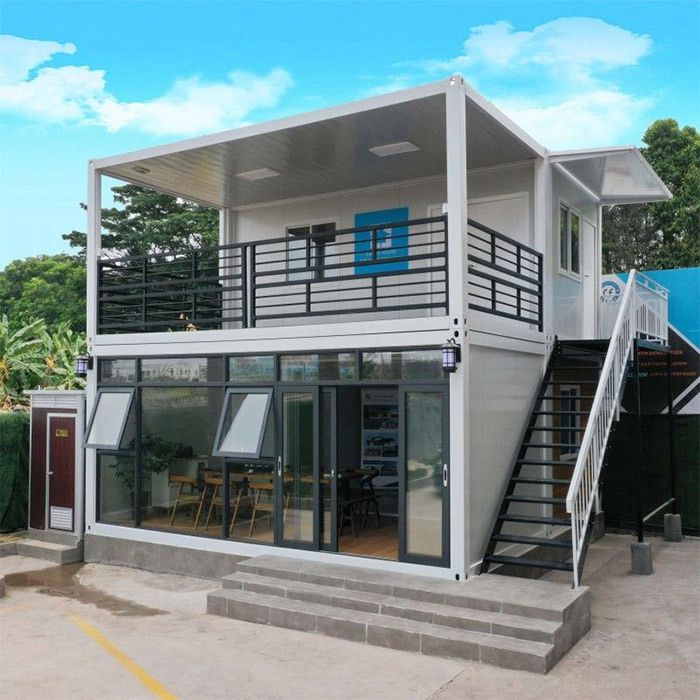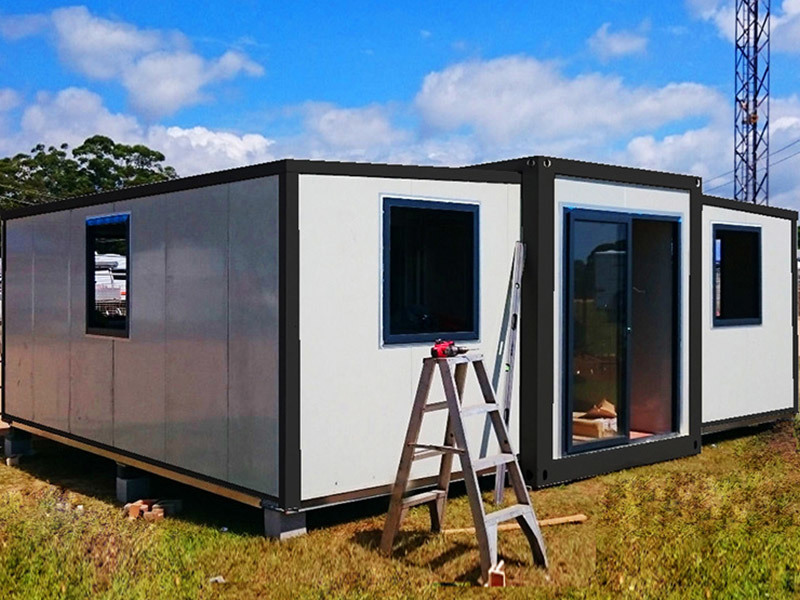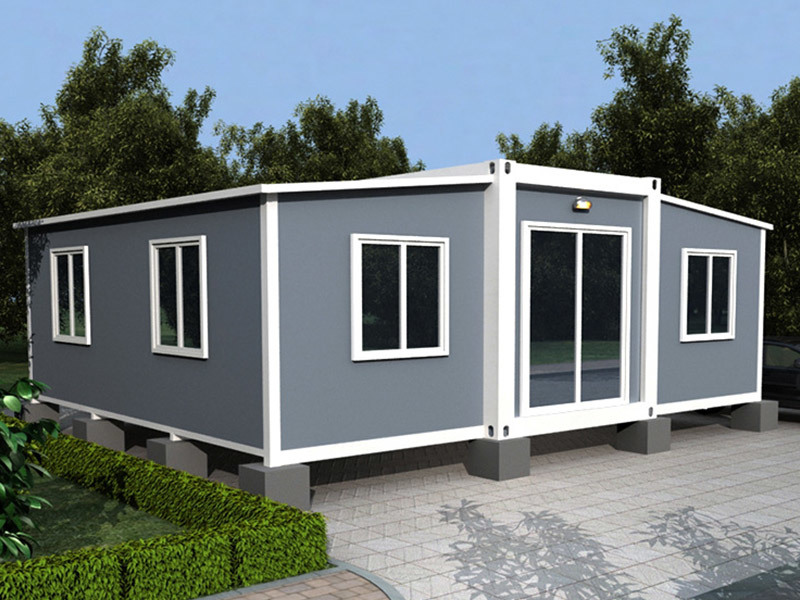Committed To Providing Customers With One-Stop Integrated Housing Solutions
Exploring the Benefits of Container Homes and Shelters for Sustainable Living
Jun 27,2025

Exploring the Benefits of Container Homes and Shelters for Sustainable Living
Table of Contents
- Introduction to Container Homes and Shelters
- What Are Container Homes?
- Sustainability of Container Homes
- Affordability and Economics of Container Homes
- Design Flexibility and Customization Options
- Quick Construction Time and Efficiency
- Mobility and Portability of Container Homes
- Challenges and Considerations in Container Living
- Conclusion
- Frequently Asked Questions
Introduction to Container Homes and Shelters
Container homes have emerged as a powerful solution to modern housing challenges, merging practicality and sustainability. As we face increasing environmental concerns and rising housing costs, the need for innovative living solutions is more pressing than ever. Container homes are not only eco-friendly but also offer a flexible, affordable housing alternative. In this article, we will explore the myriad benefits of container homes and shelters, focusing on their impact on sustainable living.
What Are Container Homes?
Container homes are structures created from steel shipping containers that have been repurposed into living spaces. Originally designed for transporting goods, these containers can be transformed into stylish, functional homes, offices, and shelters. Their inherent strength and durability make them an ideal choice for building, as they can withstand various environmental challenges.
The typical shipping container comes in standardized sizes, usually 20 or 40 feet long, allowing for a modular approach to design. This modularity means that multiple containers can be combined to create larger living spaces tailored to individual needs.
Sustainability of Container Homes
One of the most compelling advantages of container homes is their sustainability. By utilizing materials that would otherwise be discarded, we significantly reduce waste and the demand for new resources. Here are some aspects that highlight their sustainable nature:
1. Recycling and Upcycling
Transforming shipping containers into homes aligns with the principles of recycling and upcycling. Instead of sending old containers to landfills, they can be repurposed into livable spaces, thus reducing environmental impact.
2. Energy Efficiency
Container homes can be designed to be energy-efficient, incorporating features like solar panels, green roofs, and high-quality insulation. This not only minimizes energy consumption but also lowers utility costs in the long run.
3. Reduced Carbon Footprint
Building a container home generates a significantly lower carbon footprint compared to traditional construction methods. The energy required for new building materials is often greater than repurposing existing structures.
Affordability and Economics of Container Homes
The economic aspect of container homes makes them an attractive option for many individuals and families. Here are some key points that demonstrate their affordability:
1. Lower Construction Costs
Container homes can be constructed at a fraction of the cost of conventional homes. The cost savings come from the reduced need for extensive building materials and labor, allowing for more budget-friendly projects.
2. Minimal Maintenance
The steel structure of shipping containers makes them resistant to many common issues faced by traditional homes, such as termites and rot. This durability leads to lower long-term maintenance costs.
3. Potential for Quick ROI
For those considering container homes as an investment property, the potential for quick returns on investment is enhanced due to lower initial costs and high demand for affordable housing solutions.
Design Flexibility and Customization Options
Container homes offer remarkable design flexibility, enabling homeowners to create unique and personalized spaces. The following factors contribute to their versatility:
1. Modular Design
The modular nature of containers allows for various configurations. Homeowners can stack containers, arrange them side-by-side, or even use them in creative layouts, providing endless possibilities for design.
2. Customization
Container homes can be customized to meet individual aesthetic and functional preferences. From modern minimalistic designs to rustic finishes, the options are limited only by the homeowner's imagination.
3. Interior Layout Options
Inside a container home, the layout can be adapted to suit different lifestyles. Whether you require an open floor plan or distinct rooms, container spaces can be designed to accommodate your needs.
Quick Construction Time and Efficiency
Time is a crucial factor in any construction project, and container homes excel in this aspect. The efficiency of constructing container homes offers several advantages:
1. Fast Build Process
Since the primary structure is already in place, container homes can often be completed much faster than traditional homes. This is particularly beneficial for those in need of immediate housing solutions.
2. Less Disruption on Site
The modular approach leads to less disruption during the construction process. The majority of work can be done off-site, reducing the time required for site preparation and minimizing noise and inconvenience for neighbors.
3. Reduced Weather Delays
With a substantial portion of the build occurring in a controlled environment, container home projects are less susceptible to delays caused by adverse weather conditions.
Mobility and Portability of Container Homes
Another significant benefit of container homes is their inherent mobility. Here’s how this feature enhances their appeal:
1. Relocation Flexibility
Container homes can be relocated, making them ideal for individuals who may need to move for work or personal reasons. This flexibility allows homeowners to take their living space with them, offering a sense of stability in a transient world.
2. Ideal for Temporary Housing
For those in need of temporary shelters—such as during natural disasters or for traveling—container homes are an effective solution. They can be transported to various locations as needed.
3. On-Site Mobility for Projects
In construction or remote work sites, container homes can serve as mobile offices or living quarters for workers. Their portability enables them to be brought to locations that lack permanent facilities.
Challenges and Considerations in Container Living
While container homes offer numerous benefits, there are challenges and considerations that potential homeowners should keep in mind:
1. Zoning and Regulations
Before deciding on a container home, it’s essential to check local zoning laws and building codes. Regulations around container homes vary widely, and compliance is crucial.
2. Insulation and Climate Control
Container homes can become extremely hot or cold, depending on the climate. Proper insulation and climate control systems must be implemented to ensure year-round comfort.
3. Financing Challenges
Securing financing for container homes can be more challenging than traditional homes. Some lenders may be unfamiliar with container structures, complicating the loan process.
Conclusion
Container homes and shelters present a forward-thinking solution to sustainable living, combining affordability with environmental responsibility. From their unique design possibilities and energy-efficient features to their rapid construction times, these innovative homes are reshaping the way we think about housing. As we navigate a world increasingly focused on sustainability, embracing container homes may very well be a significant step toward a greener future.
Frequently Asked Questions
1. Are container homes safe to live in?
Yes, container homes are structurally sound and can be made safe with proper design and construction practices.
2. How much does it cost to build a container home?
Costs vary widely based on design, location, and specific features, but they are generally lower than traditional homes.
3. Can container homes be moved once they are built?
Yes, one of the advantages of container homes is their portability, allowing them to be relocated as needed.
4. What are the insulation options for container homes?
Common insulation materials include spray foam, rigid foam panels, and traditional insulation batts, chosen based on climate and personal preference.
5. Do container homes require special foundations?
While they can be placed on various foundations, it is essential to consult local regulations and building codes to determine the most suitable option for your specific location.
Hot Tags:
Contact Us
E-mail:
Phone/WhatsApp:
Address:
No. 132 Renmin West Road, Fucheng County, Hengshui City, Hebei Province



